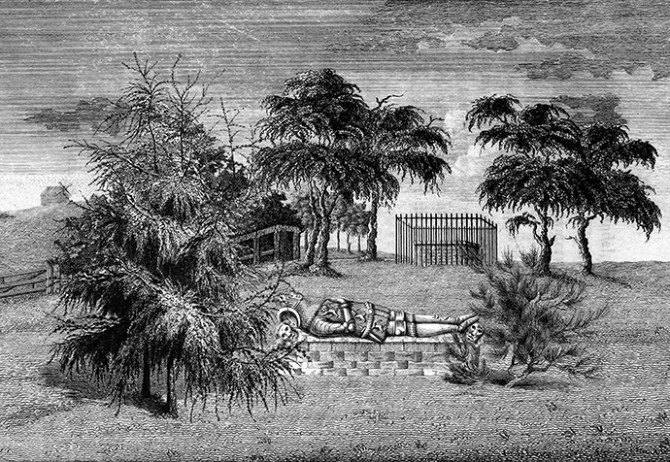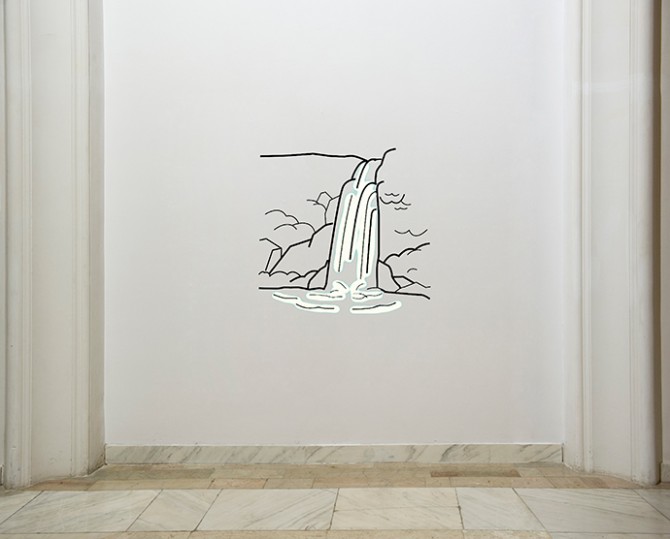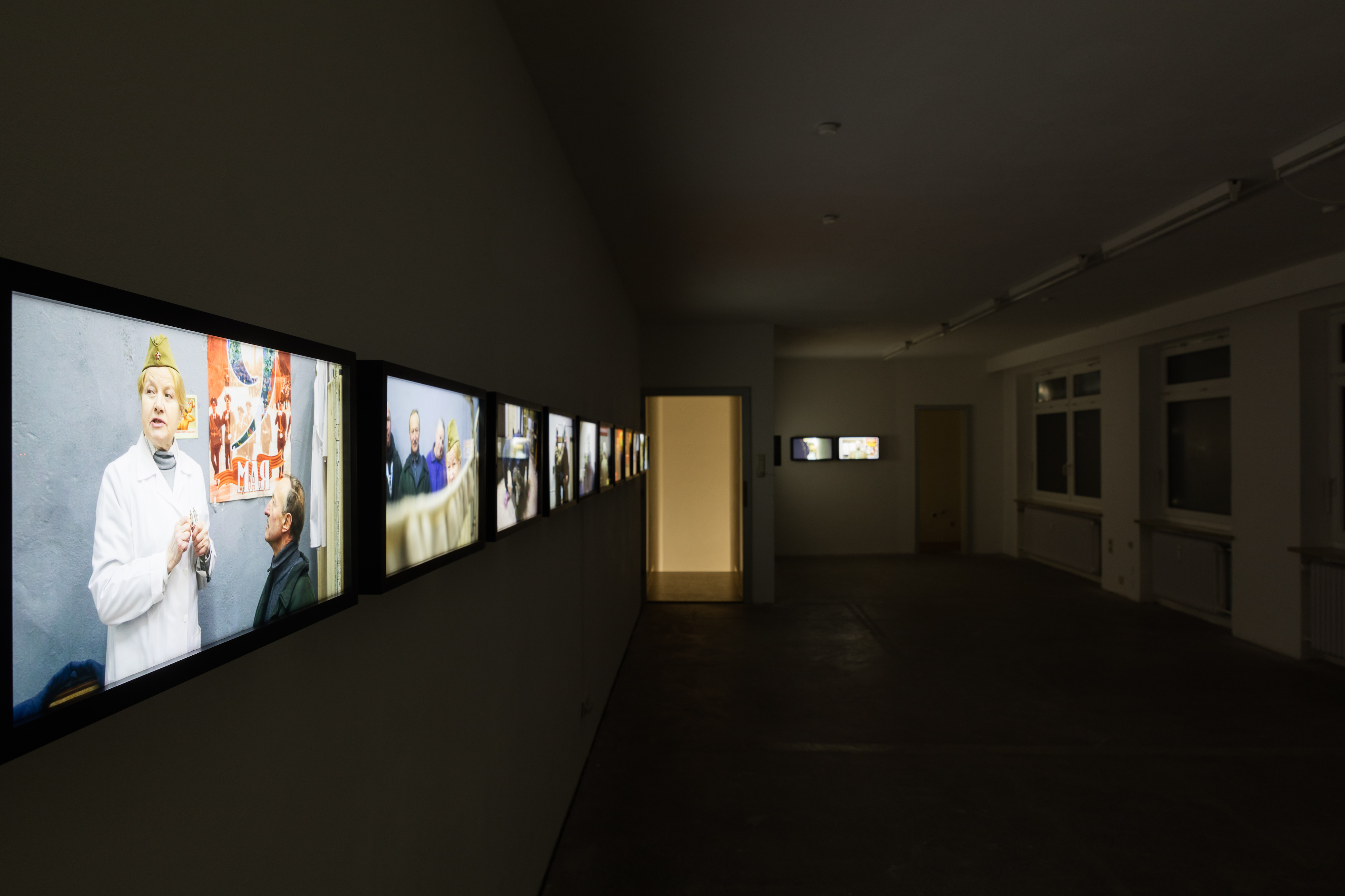Romania at the 56th edition of the International Art Exhibition – la Biennale di Venezia.
Author: Gabriela Mateescu
Published on: 31.03.2015

Gabriela Mateescu: Congratulation on the selection of your project. We can say that this year Romania covers all the media. Can you please elaborate the subject of the exhibition Inventing the truth. On Fiction and Reality?
Diana Marincu : Thank you, I appreciate your interest in the exhibition and I hope we will see you at the opening, on the 8th of May.
The starting point of this exhibition was the interest I have noticed along the years in a new way of approaching the archive, as a flexible and unpredictable concept in contemporary Romanian art, and the use of history through the insertion of fiction in the process of interpretation. Of course, fiction, as an instrument for understanding the past, is not only a way of turning true facts into invented stories, it is not a lie. It is rather a convention standing for the need to see the invisible story, the anonymous and personal narrative, the “repressed other of historical discourse”, in the words of Michel de Certeau. This insertion of fiction in the “official” narrative I think opens up a new way of imagining possibilities and outcomes not only the past, but for the future as well. The second conceptual path that the visitors can take in the exhibition is the use of fiction in the everyday life relationship we build with the objects around us – the concepts used by Alex Mirutziu were very helpful in clarifying this – „bureaucratic objects” and „ontological design”. Our interaction with the silent objects is very relevant to the way we construct our identity and our physical development according to this relation. Alex’s research focuses a lot on an object-oriented philosophy and turns to the invisible effect that bodies in space have on each other – be they humans or objects. In the end, this exhibition should function as a relevant space in which we question both ourselves and the history of others – anonymous people, unknown objects, foreign places etc.
GM: How did you select the artists? I know you`ve worked with some of them from as far as the exhibition Pasaj at The National Museum of Contemporary Art – Anexa, third floor
DM: I have previously worked with all of them in different ways. It is true that with Michele Bressan, Lea Rasovszky and Larisa Sitar I had a recent collaboration in the form of the exhibition we did in May 2014, Pasaj (exhibition produced by Ephemair Association and opened on The White Night of the Galleries); but with the others I also had a professional relation derived from the fact that I wrote about their works and exhibitions. Whenever I write about an artist I try to meet him/her, get to know them more, understand their way of thinking and acting. I believe in this role of an involved art critic, not in a distanced one who analyzes what is out there in the exhibition without connecting what is seen with what is behind it, as part of the process of artistic creation or research.
The selection for this exhibition, Inventing the Truth. On Fiction and Reality, came naturally, having in mind the works I already knew from these six artists, works not yet made but about which I had already a clear idea (or about which I had conversations with the artists). I gave carte blanche to two of the artists, Lea Rasovszky and Alex Mirutziu. I always enjoy working in different ways according to the practice of each artist. I invited all of them to make proposals, to talk about their projects and I also left a bit of room for surprise.

GM: Can you tell me more about each of the individual works of the artists and how they connect to each other?
DM: The two main approaches of the theme in this exhibition can be summarized as follows: one of the conceptual lines of thought relates to a nonchalant and informal understanding of history, a hidden story than can be reformulated according to the intrusion of fiction in the process of interpretation. Fiction can be seen as a disturbing noise or as a prop that one can use to fill in the blanks. On the other hand, fiction is also an everyday instrument used to explore options for the reality in which we live in or the limited possibilities we are confronted with. But in this case fiction is not day dreaming, but rather a technique of grasping what is not so obviously delivered to us by reality. It is a way of relating to our everyday life in a poetic way, it makes you see the invisible…

The three artists I have developed the first research path, regarding historical narratives, are Carmen Dobre-Hametner, Ștefan Sava, and Larisa Sitar. Carmen’s photographic project is a very consistent research focused on many issues relating to reenactment as a strategy for understanding history and for bringing past facts in the proximity of the now, the present life. She discovered a very interesting site called The Soviet Bunker, in Vilnius, Lithuania, where tourists come to experience the trauma of communism. Actors are hired to stage for the visitors the encounter with the state apparatus in an aggressive way, turning the violent gestures, criminal acts and oppression characteristic to the Soviet Union experience into a „commercial” simulacrum of history. The result of her research is a series of photographs that she will display for the first time at The Romanian Institute in Venice.
Ștefan Sava presents a video essay in which he questions the limits and the potentialities of interpreting an archive – the visual representation of a traumatic past. Each image is submitted to an archeology of the image based on the dialectics between what is rendered visible and what is left out from the visual field. The video Ways of Seeing reviews various theoretical approaches to looking as well as the interpretation of the images according to the methodology indicated by Georges Didi-Huberman – privileging singularity in the detriment of a unifying, collective vision. Thus the discontinuity, as a strategy of furthering knowledge, and the flexibility of free associations between images through comparisons, similarities and differences, are put to work.
Larisa Sitar will continue her project centered on constructing false friezes in the technique of collage that touch on the relation between history and ideology. She appropriates certain engravings from different periods depicting violence and ruin. History is always violence while ruin best represents dislocation, rupture, and death, therefore phenomena which mark the transition from one political regime to the other.
On the other hand, the artists whose works refer more to connecting with the objects of our everyday life place their gestures in an abstract field, outside chronological conventions, in an attempt to see in these objects more than the visual and functional features they have. Personal history replaces the objective one and sustains the intensity of a gesture for which there is no tangible truth.
Michele Bressan reflects on the story of an “improved” reality, extended by one day in the work entitled Present. This is a retrospective influence on a life which has gained one more day through misdating an event on a book dedication. The work Single Use puts forth apparently banal objects in a state of exception, by investing them with a new role – of keeping the promise and intention of the product intact and hidden. The containing unprocessed films are in a permanent state of delaying the revelation and of projecting an inaccessible content.
Lea Rasovszky composes a story from fragments of true stories, personal memories and book excerpts. Fiction becomes here an integral part of the storyteller’s life and is matched with a visual setting of the gallery space. The audio-video installation starts from the idea that there are certain “psychological realities” and melancholic feelings which influence the relation between mental projections and real perceptions.
Alex Mirutziu continues the series of Prepared Poems which relies on attributing to each word making up a poem the responsibility of determining the spacing of the lyrics, the relation to the typing font, the ratio between written and blank spaces as well as the spontaneous meaning connections that form on the sheet of paper. The performance The Finnish Method, which he will present at the opening, refers to the idea of “ontological design”, in view of studying by means of a Finnish piece of furniture, the way in which people influence objects and vice versa.
GM: Last edition`s winner was the debut Angola Pavilion, an exhibition curated by 2 architects mainly showcasing photographer Edson Chagas. The young group of artists that will exhibit at The ICR Gallery represent the new generation of multimedia artists in Bucharest. Do you think that this is an opportunity for this kind of medium to have more visibility on the local scene?
DM: I usually do not consider things in terms of media because I think now more than ever the issues that the works point to are more important than the medium and in the case of this exhibition we didn’t think too much about the popular quality that a certain medium has today. Of course, I found some connections between the artists in terms of their interests and the esthetics they prefer. And I think that new generations are connected to other referential points and other urgencies than the previous ones. But at the same time multimedia is so frequently used today in Romania and in the world that it cannot work as a characteristic of this new generation of artists. 5. You talk about extending fiction into reality. How is that influencing our view of the past or the present? And how can we talk about reality and discern it in this limbo of mixture?
Reality is not only what is there in front of us. Reality is also a gap between facts and fiction and it is up to every one of us to fill it in with content, to shape it and change it through our own contribution – be it utopian or not. I do not think that reality is given to us and we must do our best to live with it. On the contrary, we must do things to change it and see what can come out of this.
GM: What determined you to make the website www.inventingthetruth.com, and how do you see this helping the artists getting more visibility or their relation with the public?
DM: I believe in an honest communication with the public and I think the way to cover all the areas is a website containing extensive information. This is a necessary tool these days. On the other hand, I don’t think it can replace the physical connection with the works of art that are embodied in a physical medium. It can become a real experience only when it is superimposes with the medium of the work itself – net art for example. What we wanted to do was to extend the information on the artists and the exhibition so as it can also be available after the show ends – the news section, the portfolios of the artists etc. And, of course, there is the press kit which I would like to see used by both the Romanian press and the international one.
Diana Marincu (b. 1986) is a curator and art critic, having written exhibition reviews or essays in the “Arta” magazine, “Observator cultural”, “IDEA art + society”, and other publications. She lives in Cluj and Bucharest. She graduated from the Faculty of Arts and Design in Timisoara, and obtained an MA degree in art history and theory from the National University of Arts in Bucharest. She is currently a PhD candidate at the University of Arts in Bucharest with a research focusing on the curatorial discourses built in relation with political and geographical criteria in the last twenty years of exhibition making. Her most recent curatorial work includes: Mihai Iepure-Górski, Words in a Room, : BARIL, Fabrica de Pensule, Cluj, 2015; Between the Lines (group show), Plan B, Fabrica de Pensule, Cluj, 2014; PASAJ (Michele Bressan, Lea Rasovszky, Larisa Sitar), The National Museum of Contemporary Art – Anexa, Bucharest, 2014.
The New Gallery of the Romanian Institute for Culture and Research in Humanities in Venice
9 May – 22 November 2015
Opening: 8 May, 5 pm
5:30 pm: Alex Mirutziu, The Finnish Method, performance
Project management, production and communication: Ephemair Association
Organizer: Romanian Cultural Institute
Commissioner: Monica Morariu
Deputy Commissioner: Alexandru Damian